As an Amazon Associate I earn from qualifying purchases.
Originally from Spain, puchero is a big, hearty stew made in various versions all over the Spanish-speaking world, as well as in the former Spanish colony of the Philippines. This is a Mexican version, using venison — although beef is more common.
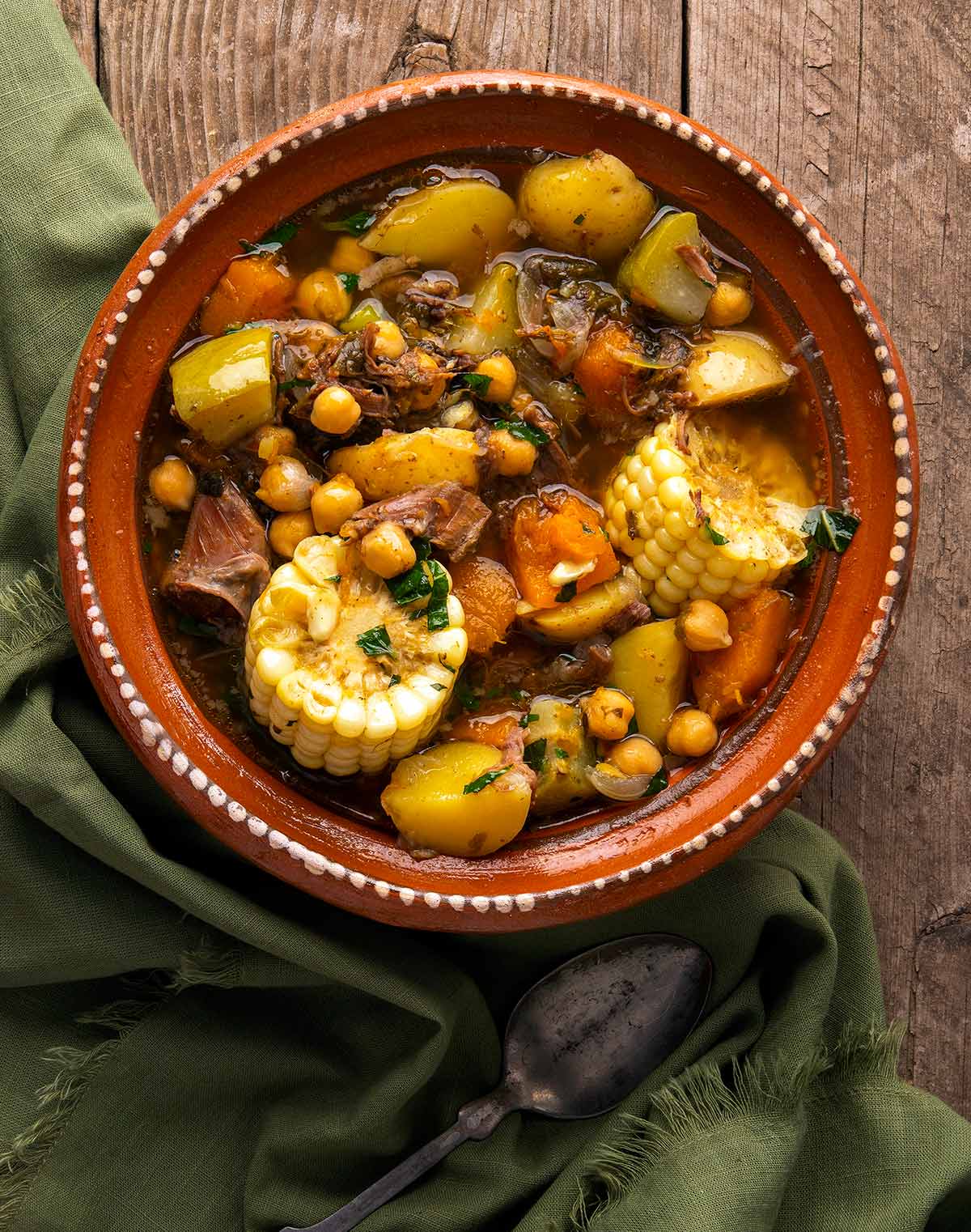
The word puchero means “stew pot,” and that’s what this is. Endless variations exist, and puchero is eaten in several different ways, too.
Traditionally, you would get a bowl or cup of the broth, and the vegetables and meat in another bowl alongside, very much like French pot au feu or Italian bollito misto. I’m not a fan of that presentation, but you can serve your puchero that way if you’d like.
Puchero is very closely related to Spanish cocido or olla podrida, and to be honest, I am not entirely certain what differentiates them.
Nothing absolute defines puchero. Most, but not all, versions have chickpeas. Most, but not all, do not use other types of dried beans. Most, but not all, use green beans.
Meats for Puchero
Meat is a normal addition, and there is a version of puchero in Yucatan that uses three: chicken, pork and beef. Mine uses shanks from a nilgai I shot in Texas. Shanks, shoulder or neck are what you want here; cheap cuts with lots of connective tissue. Oxtail is another great choice.
If you are working with pork or a bovid — beef, bison, nilgai, blackbuck, oryx — you really want to try to get some marrow into your puchero. It adds needed fat and richness. I scoop it out after the bones have cooked a while.
The basic puchero recipe is to simmer meats until they are more or less ready, discard bones and extract marrow, then add the vegetables one by one.
This is an ancient, peasant stew designed for cheap cuts, very much like Portuguese feijoada or Kentucky burgoo or Virginia Brunswick stew.
So Many Vegetables to Choose From
The main difference between those stews and puchero is the size and presence — and importance — of the vegetables. You want to add them one by one so they are all just tender when you eat it.
This is not a “hammer it all day” stew like burgoo or Brunswick stew.
Mostly you want to use a selection of harder root-type vegetables like potatoes, carrots, turnips, etc, squashes of various forms, those chickpeas (canned or dried), something green, and corn.
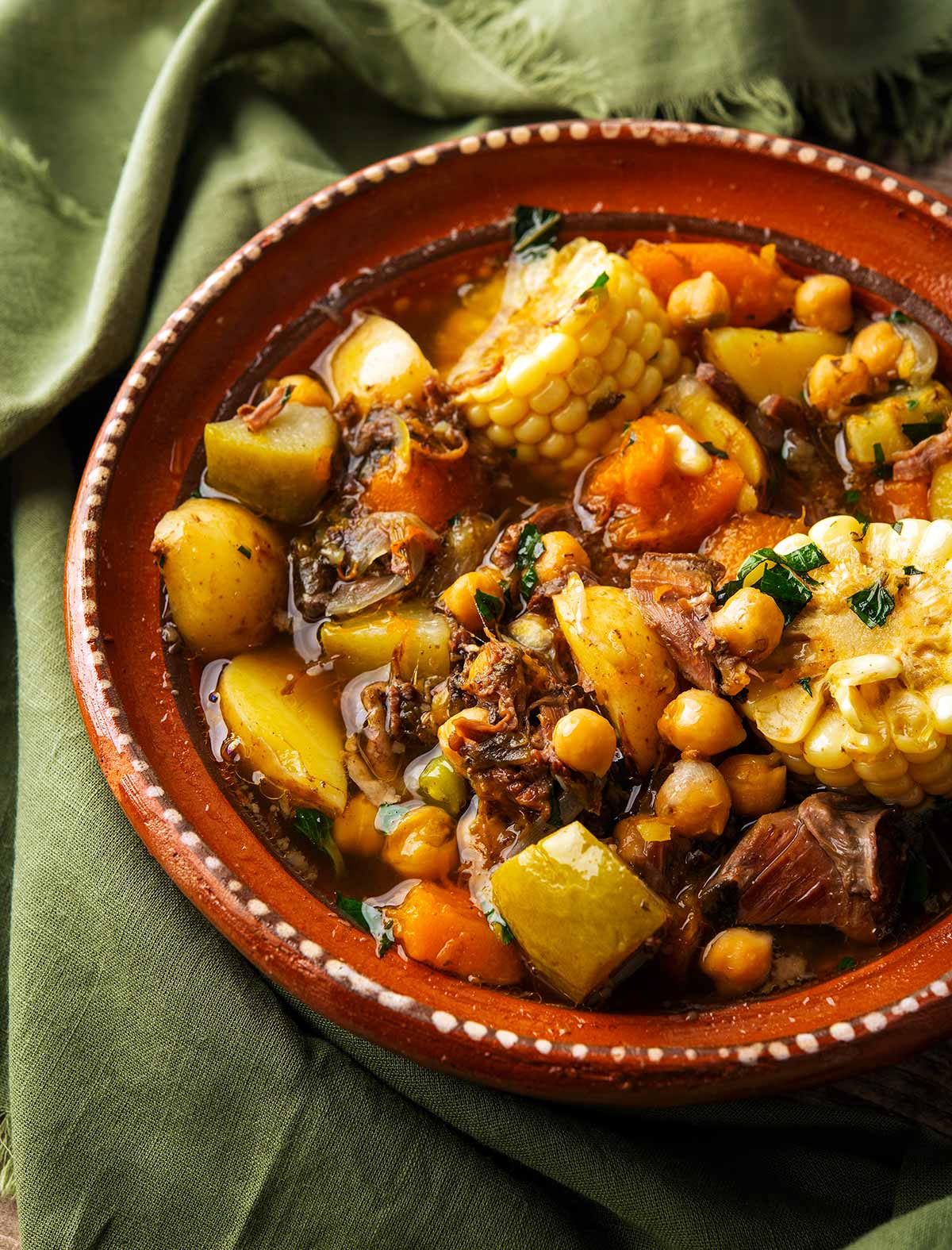
You’ll note that the corn is still on the cob. I was skeptical of this at first, and did it only because really all the recipes do. My inner voice was like, “Sigh, this is going to make this hard to eat.”
I was wrong. By leaving the corn on the cob, the cobs add a touch of sweet to the stew, and when you pick up the pieces at the end and gnaw on them, it’s like a little dessert. I’m convinced.
Other vegetable options for puchero include sweet potatoes, green chiles, cabbage, rutabaga, onion, garlic, jicama, and occasionally other sorts of beans.
Puchero in Mexico is almost always garnished with cilantro or mint, plus lime juice.
You’ll note that tomato is not on this list. For whatever reason, it’s rarely used in this particular stew, at least not in Mexico or Spain.
Once made, puchero will keep for a few days in the fridge. Reheat it gently, however, or the vegetables will turn to mush.
Puchero
Ingredients
- 4 pounds beef or venison shank, or shoulder or neck meat
- Salt
SEASONINGS
- 1 teaspoon oregano, Mexican if possible
- 1 teaspoon ground cumin
- 1 teaspoon ground coriander
- 1 teaspoon ground black pepper
- 1/2 teaspoon ground anise or 1 star anise (optional)
- A 2-inch piece of cinnamon (optional)
- A pinch of saffron (optional)
VEGETABLES
- 6 cloves garlic, whole and peeled
- 1 white or yellow onion, sliced
- 1 1/2 pounds potatoes, cut into chunks
- 1 pound winter squash, cut into chunks
- 2 chayotes, cut into chunks (optional)
- 4 Anaheim or poblano chiles, roasted, seeded and cut into chunks
- 3 ears of corn, cut into 1 or 2 inch rounds
- 1/2 pound green beans, cut into bite-sized pieces
- 1 pound cooked garbanzo beans, canned or pre-cooked
- 1/2 cup chopped cilantro
- Lime wedges to serve
Instructions
- Salt the meat well before you chop all the vegetables. When those are done, put the meat in a large pot and add about 1 gallon of water, more or less. Bring this to a boil and skim off the froth that floats to the surface. Drop the heat to a simmer and add the garlic and all the seasonings. Simmer, partially covered, for 3 hours.
- The meats should be tender by now; check after 2 hours. Remove the meats and strip off the meat, chopping it into bite-sized pieces. Discard any bones. If there is marrow in the bones, scoop it out and add it to the stew; you can break it up if you want. Add in the potatoes and onions. Let these simmer 20 minutes.
- Add the winter squash and chayotes and simmer 20 more minutes. Add the green chiles, corn, garbanzo beans and green beans and cook another 10 minutes. Add the cilantro and serve with lime wedges. A drizzle of really good olive oil is a nice touch, too.
Notes
Keys to Success
- Note that my meat choice is great, but you can use really any cheap cut that likes long, slow cooking. Stewing hens, wild turkeys, pork hocks and shoulder, old pheasants, shanks of really any animal, oxtail, mutton, you name it.
- The seasoning mix I use is Yucatecan, but you can use all or none of what I use and it’ll fine.
- Don’t like cilantro? Another very common garnish is mint. Parsley is common, too.
- Some versions of this stew add sausages, ranging from blood sausage to chorizo to butifarra. If you use sausages, add them in the last 20 minutes.
Nutrition
Nutrition information is automatically calculated, so should only be used as an approximation.

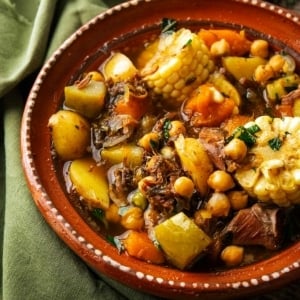
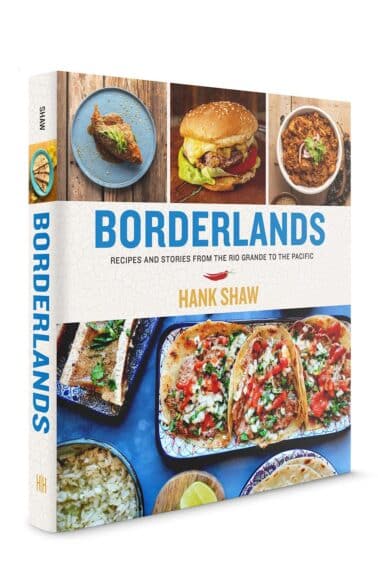

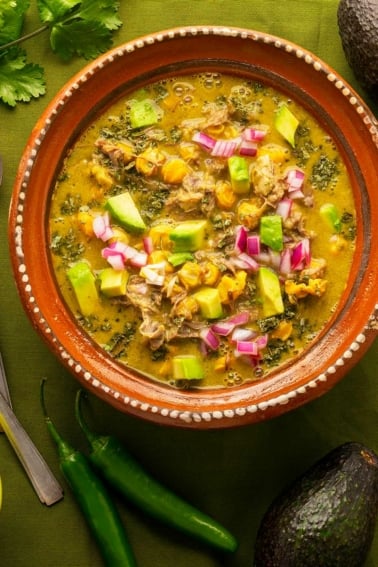

Just made this last night and it was DELICIOUS! I was really unsure about the recipe – it called for so many different ingredients, and some sounded weird together. But it turned out perfect. The broth was so flavorful. I wanted it a little spicy, so I did add some cayenne pepper at the end. I used venison and it didn’t turn out game-y at all!
Also, as another commenter suggested, I didn’t add the potatoes in with the onions. I added them with the butternut squash and found them to still be a little too soggy. I would add them with the butternut squash, add the corn and greens beans and other remaining items 5 minutes later, then cook for another 10 minutes and be done.
This made a huge amount of stew for us! Probably closer to 15-16 servings.
Very flavorful. I used venison neck and shank. Didn’t use the corn, but added avocado and 6oz of chopped linguica. This dish is much more than your standard stew.
Great recipe, when it was posted and I saw the picture of ingredients I had to give it a shot. I had braised pronghorn should meat from a few days ago and some cooked garbanzo beans so I had to cook it a bit backwards but it was awesome none the less. Corn on the cob wasn’t an option for me since it February, and no chayotes either so it was butternut squash from the garden….like you said, take this recipe as a guide, not gospel.
Though I’ll say for me the cinnamon and star anise are a must.
This was an interesting recipe and use for venison shank. However the potato and onion cook time felt too long, you could add them with the squash and onions and I think it they would have had better texture at the end. All in all, a nice stew.
Caitlin: Definitely an option with the potato, but I do like really long-cooked onions. I’ll add that in the recipe.
Hi Hank. Thanks for acknowledging our Philippine version of this Spanish hearty stew which we always make with either chopped tomatoes and/or tomato sauce or paste to give a stronger taste and color minus the saffron and paprika. Just like the Latinos we also use plantains, chickpeas and green beans. We use fish sauce to give the umami taste a salute. Asian fusion method. I reckon that cocido is defined as simply an originally Spanish boiled dinner of various meats together in a clear broth. Hope this is informative. Happy cooking!
Reginald: Thanks! There are so many versions of this dish, it’s always interesting to see new ones.
Really good and interesting flavor. Sort of a Mexican version of Vietnamese pho broth. I used venison shank, a little Serrano in place of the Anaheim Chile, cabbage in place of green beans, and left out the garbanzos. Definitely a keeper.
Really nice! I used what I had: mutton and pork soup bones, and a small chicken. I really wanted to add peppers, but alas, didn’t have any. Still worked: added some Hatch chile powder.
This is just what I was looking for! Easy to make. In my freezer is a bag of beef soup bones, I know it will make an amazing meal for my family. Thanks for all your input.
Jean